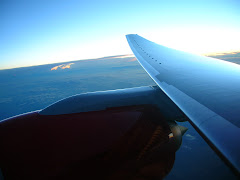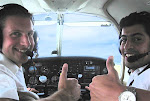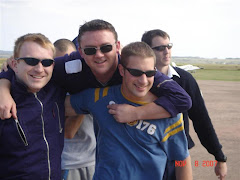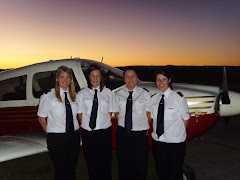
First Solo to PPL
Monday, 12th November, about 9 weeks since we arrived, was the date I completed my PPL navigation test. The PPL test here is split into two parts – first is the GF Test, which is an hour long flight in the local area, during which one is tested in the general control of the aircraft, ability to land in cross-wind conditions, on short runways, and so on. The second part is the navigation test which has to include a trip into controlled airspace and have a total trip distance of at least 200 miles – I was sent to East London airport for my test, which was conducted by our CFI, Robin Gout.
The path to obtaining the PPL seemed long and hard when I first arrived, but with hard work and focused guidance it turned out easier than it first seemed. The combination of ground school and 2 flying slots per day ensures that life never gets boring. Progress is quickly made through the lessons and exams. The lessons are well planned, and before every flight the items to be conducted in the lessons are clearly explained by the instructors, minimising any uncertainty in-flight as to what should be happening, or how to do something.
Immediately after first solo, ‘Post Solo Consolidation’ commences, during which solo circuit flights totalling 3 hours are completed
Soon after the consolidation comes the first small challenge – the first solo trip to the General Flying Area (GFA). The GFA is an area divided into several sectors around the airfield where one goes to practice various manoeuvres, e.g. steep turns, simulated forced landings, spins, etc… At the time, this excursion was a very big deal, because up until that point any trips away from the airfield were with an instructor. I was quite nervous the first time, but of course it all went fine. Now a trip to the GFA is just like a normal everyday activity!
The best bit of this stage of the course has to be the ‘navs’ (navigation exercises) where everything I’ve learned up to this point gets put to good use. Going on a ‘nav’ isn’t as simple as anything I’d done beforehand, as a lot of pre-planning is required. Tracks have to be plotted on maps, drift due to wind calculated, flight plans need to be filed and most importantly the weather checked to ensure that it is good for the route which we’ve selected. One of the best parts of going on a ‘nav’ to somewhere like Port Elizabeth (PE) airport is hearing all the commercial flights on the radio, as well as landing behind or in front of them. There’s something about intermingling with 737’s that makes it seem all worthwhile! Going on a ‘nav’ is also an opportunity to view some of the stunning scenery in this part of the country – mountains, cliffs, valleys, rivers, etc.
So, with the PPL over with, I’ve now moved up to flying a Cherokee 180, and am well on my way to starting the Night Rating.Brendan Kehoe







No comments:
Post a Comment